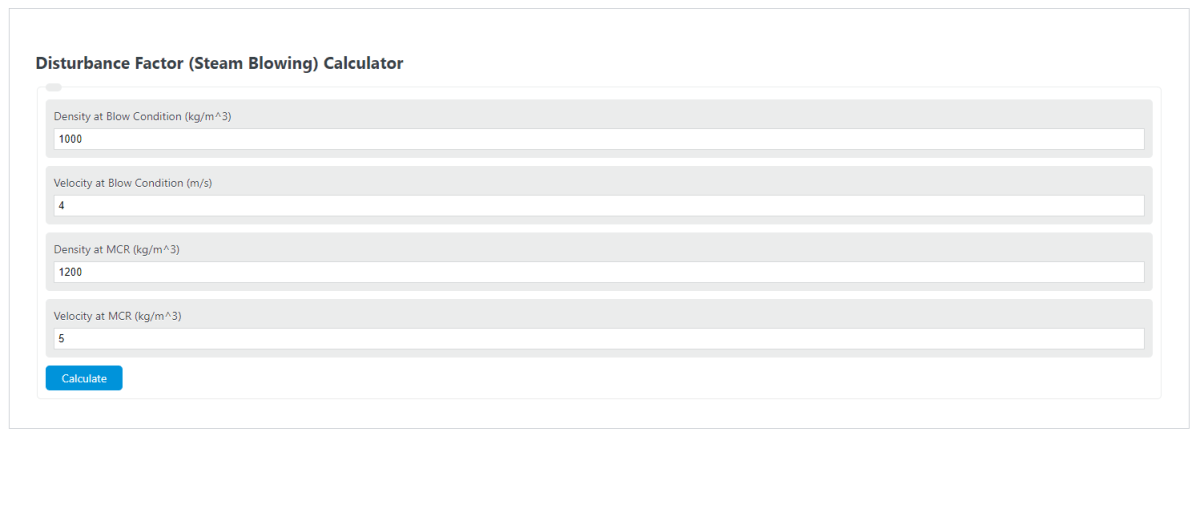Enter the velocity and density at the blow condition and the velocity and density at the MCR condition into the calculator to determine the disturbance factor.
- Deaerator Vent Rate Calculator
- Boiler Efficiency Calculator
- Reynolds Number Calculator
- Dynamic Viscosity Calculator
Disturbance Factor Formula
The following equation is used to calculate the Disturbance Factor.
DF = [ 1/2*pb*Vb^2 ] / [ 1/2*pm*Vm^2 ]
- Where DF is the disturbance factor
- pb is the density at blow conditions (kg/m^3)
- Vb is the velocity at blow conditions (m/s)
- pm is the density at MCR conditions (kg/m^3)
- Vm is the velocity at MCR conditions (m/s)
To calculate the disturbance factor, divide the kinetic energy during blow conditions by the kinetic energy during MCR conditions.
What is a Disturbance Factor?
Definition:
A disturbance factor is a measure of the ratio of kinetic energy during blow conditions to the kinetic energy during MCR conditions.
How to Calculate Disturbance Factor?
Example Problem:
The following example outlines the steps and information needed to calculate the Disturbance Factor.
First, determine the density and velocity at blow conditions.
For this example, the density and velocity at blow conditions is given as 1000kg/m^3 and 4 m/s respectively.
Next, determine the density and velocity at MCR conditions.
In this case, these are found to be 1200 kg/m^3 and 5 m/s respectively.
Finally, calculate the disturbance factor using the formula above:
DF = [ 1/2*pb*Vb^2 ] / [ 1/2*pm*Vm^2 ]
DF = [ 1/2*1000*4^2 ] / [ 1/2*1200*5^2 ]
DF = .5333
FAQ
What is the significance of calculating the disturbance factor in engineering?
The disturbance factor is crucial in engineering because it helps in assessing the stability and performance of fluid flow systems, such as in piping, ventilation, and aerodynamics. A higher disturbance factor can indicate potential issues with flow instability or inefficiencies in the system, prompting further analysis or design modifications.
How do changes in density and velocity affect the disturbance factor?
Changes in density and velocity directly impact the disturbance factor by altering the kinetic energy ratio between two states, such as blow and MCR conditions. An increase in velocity or density at blow conditions, relative to MCR conditions, will increase the disturbance factor, indicating a higher level of disturbance or kinetic energy in the system at those conditions.
Can the disturbance factor be used for all types of fluids?
Yes, the disturbance factor can be applied to all types of fluids, including gases and liquids, as it is based on the principles of fluid dynamics. However, the specific properties of the fluid, such as viscosity and compressibility, may need to be considered in more detailed analyses to accurately assess the fluid’s behavior under different conditions.
